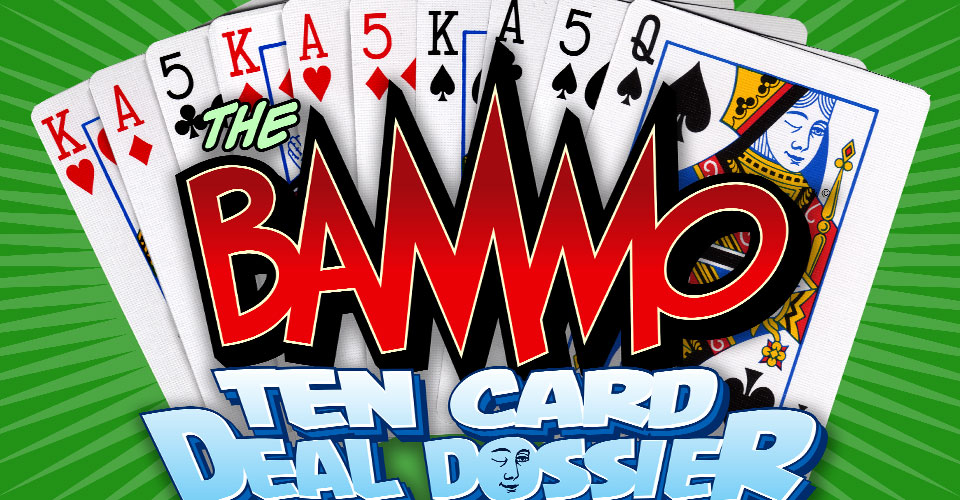Submitted by James Alan on
BY JARED KOPF, MAGIC MAGAZINE, JUNE 2015
Farmer’s new collection of ten-card poker deals is as good as it is exhaustive.
The Ten Card Deal is a modern classic of conjuring. While there are countless versions in print, the basic effect unfolds like this. After shuffling the pack, the magician deals out two five-card poker hands, one to himself and one to the spectator. The players reveal their hands, and the performer wins. Offering to make the procedure as fair as possible, the magician allows the spectator to shuffle and deal. They show down, and the performer wins. Then, stretching the limits of fairness, the magician spreads the ten cards across the table and has the spectator distribute the cards any way he wishes. The resulting hands are revealed, and the magician is again victorious.
The method, now commonly known as the Jonah Card, renders the spectator’s actions and choices completely frivolous. According to Bob Farmer’s latest research, the first correct description of the trick appears in issue 168 of The Phoenix (Bruce Elliott, 1949); the principle, however, likely originated in the gambling world many decades earlier. Elliott asserted that Dai Vernon learned it from a Mexican gambler, and Ed Marlo claimed that a gambler named Myron Long had tipped the basic idea to him and Laurie Ireland during a private session in 1941.
Lore usually surrounds powerful magic principles, so it’s no surprise that the so-called Jonah Card is steeped in such a rich history and mythology. If a student wants to learn almost everything there is to know about the Ten Card Deal, from its countless handlings to its fascinating background, he or she needs to look no further than Bob Farmer’s gigantic omnibus, The Bammo Ten Card Deal Dossier.
Farmer asserts that he has not created an “encyclopedic compilation of every version of the effect,” which is shocking when the reader takes a cursory glance through this massive tome. Instead he “[has] chosen the best versions and then arranged them so that developments on those versions follow.” Most impressively, his Dossier essentially covers a single topic and yet somehow remains utterly engrossing across every one of its 400 pages.
Farmer not only covers Jonah-based routines by brilliant creators including Dai Vernon, Paul Curry, Max Maven, Nick Trost, Ernest Earick, R. Paul Wilson, Steve Mayhew, Woody Aragón, and many others; he also includes an exhaustive section on the plot’s best methodological derivations. Discarding the Jonah in favor of simple arrangements that make the spectator’s free “choices” utterly irrelevant, these excellent routines are the progeny of Bill Simon’s The Four Queens and Alex Elmsley’s ingenious Power Poker. One look at R. Paul Wilson’s Refried Poker (a variation of Mexican Poker by David Solomon, John Bannon, and Bloomberg) will show the reader how powerful this approach to the Ten Card Deal can be.
The section on blackjack should prove interesting to cardicians who are beleaguered by the poker theme. Though it technically diverges from the general subject matter, this collection of tricks shows how far the gambling demonstration can be pushed. Furthermore, these tricks give the performer an opportunity to simulate the potency of the Ten Card Deal effect for audiences who may not be familiar with the rules of poker but who can certainly add up to 21. Max Maven’s Blackjack of All Trades is the standout here.
The Bammo Ten Card Deal Dossier is a masterful work of scholarship. Farmer’s arrangement, even when it is forced to diverge from the overall plan, is coherent and logical. His impeccable citations conform to the rigorous academic standards that the art of magic deserves. And his editorial comments (“Bobservations”) are witty and insightful, which enhances what is already a rewarding reading experience.








